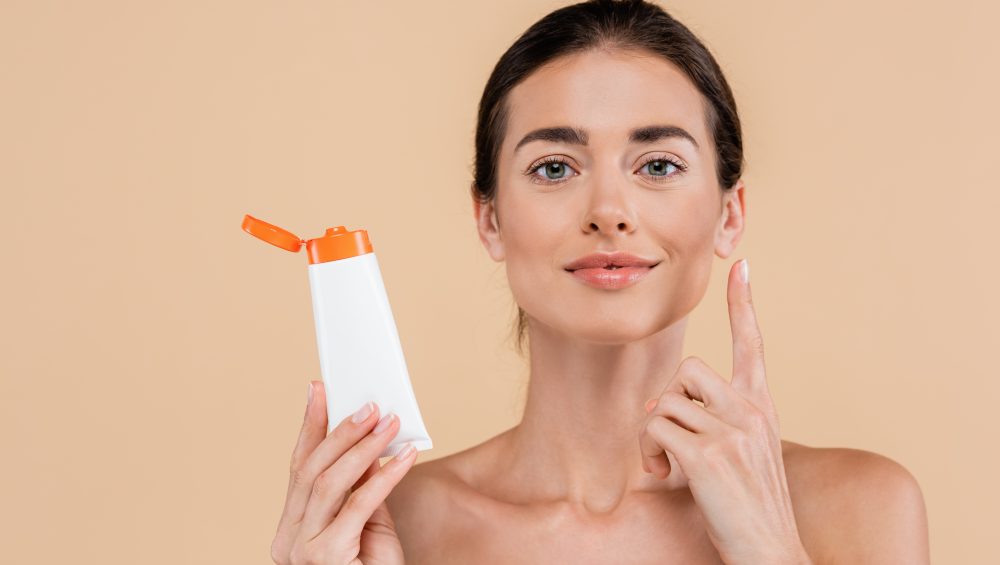6 Places To Thoroughly Sunscreen
Before heading outside, you may be in the habit of slapping SPF on your face, arms, and legs. And that’s a start — but don’t stop there. Ninety percent of skin aging can be blamed on the sun. In this article, we will discuss areas you didn’t know that you needed to apply sunscreen.
First, we will talk about some places on your head you may be missing: lips, ears, eyelids, and scalp. Then, we’ll discuss being sure that you’re getting sunscreen on your neck and chest. And finally, we’ll close with the importance of protecting your feet. Protecting all of your skin from the sun will be a piece of cake once you’re done reading this article.

1Lips
You might not think of your lips as skin, but they are — and skin cancer can develop there, too. Luckily, protecting this area is simple. All you need is a lip balm with an SPF of 30 or higher, according to the Centers for Disease Control and Prevention.
Using a lip balm with an SPF is good practice to help prevent the development of skin cancers and wrinkles in the area. The hardest part will be remembering to swipe it on throughout the day and reapplying your lip balm every two hours (or more often if you’re swimming — check the product label to be sure). And if you don’t have a lip balm on you, don’t stress. Just carry over the facial sunscreen onto the external lips.

2Ears
Thanks to all their folds, the ears are not the easiest place to apply SPF. But they get plenty of sun, so don’t skip them (yes, even if you have long hair). The Cleveland Clinic says that the ears are the third most common location for skin cancer.
Don’t just lotion up the lobes, though. You can see skin cancer on all parts of the external ear. Behind the ears, including the crease behind the ear, is also a common spot where skin cancers form. Apply a broad-spectrum cream sunscreen of SPF 30 or higher to minimize your risk, and be sure that you’ve covered all areas of the ears, front and back. And don’t forget — wearing a hat with a brim and seeking the shade wherever you can are great ideas, too.

3Eyelids
The skin around your eyes is thin, and that makes it susceptible to skin cancer as well as signs of aging, like wrinkles and sunspots. Skin cancer on the eyelids accounts for up to ten percent of all skin cancers, according to Cancer, the website of the American Society of Clinical Oncology.
Many people refrain from applying SPF to the eyelids due to the sensitivity of the area. For protection without the sting, go for a mineral sunscreen that contains titanium dioxide or zinc oxide — you can find one that’s formulated for sensitive skin. Alternatively, use an eye cream that contains SPF. Picking up a pair of sunglasses that offer UV protection is a great investment and can help further protect the eyelids from skin cancers and signs of aging that are accelerated by the sun’s rays.

4Scalp
If you think that your hair is protecting your scalp, think again. The scalp is the highest point of the body and, thus, it’s more likely to burn than the other areas. To help prevent skin cancer, SPF should always be applied to the scalp and the hairline.
Though skin cancer on the scalp isn’t common, it accounts for two to five percent of all skin melanomas; research has shown that you should still apply SPF. Wearing a hat can help, too. It doesn’t have to be as messy as you’re likely picturing. There are an array of sunscreens available that are formulated to protect the scalp without leaving behind any residue or a greasy feeling. Try a sunscreen powder or a mist that’s specifically designed for the scalp.

5Neck And Chest
You may diligently apply sunscreen to your face before leaving the house. But make sure that you show your neck some love, too. About 20 percent of all new melanoma cases are found in the head and neck region, according to an article published in October 2019 in JAMA Otolaryngology-Head & Neck Surgery.
The neck and chest are also hot spots of skin cancer. You should pay attention to these areas. Use a sheer zinc oxide on the chest and neck, noting that tinted face sunscreens can spread to the clothing.

6Feet
Unless you’re wearing a full-coverage shoe, like a sneaker, your feet may be soaking up a lot of rays. The tops of our feet are often exposed to the sun, and we should apply SPF there. The soles of your feet, on the other hand, are generally more protected because of a thick layer of dead skin cells.
But if the bottoms of your feet will be exposed to UV light somehow — for example, if you’re lying out barefoot at the beach — you should apply SPF to this area. Melanoma can develop there, too. Three to fifteen percent of melanoma skin cancers occur on the foot or ankle, according to an article published in the Journal of Foot and Ankle Research.

You may be in the habit of slapping SPF on your face, arms, and legs before heading outside. Don’t stop there; that’s just a start. The sun can be blamed for ninety percent of skin aging. In this article, we discussed areas you didn’t know you needed to apply sunscreen.
First, we talked about some places on your head you may be missing: lips, ears, eyelids, and scalp. Then, we discussed being sure that you’re getting your neck and chest. And finally, we closed with the importance of protecting your feet. Protecting all of your skin from the sun is a piece of cake now that you’re done reading this article.






